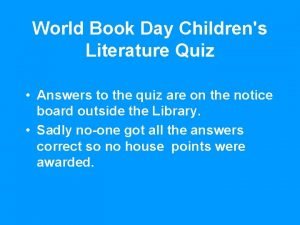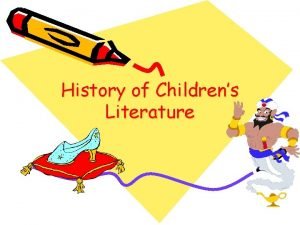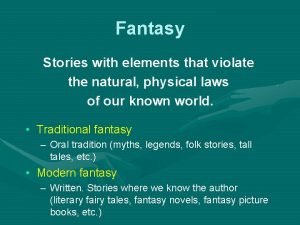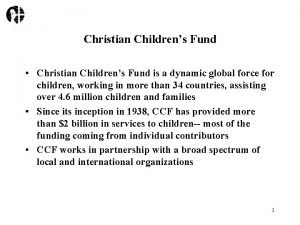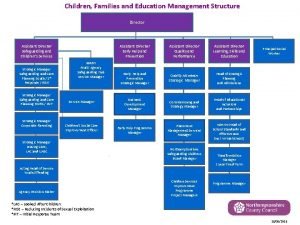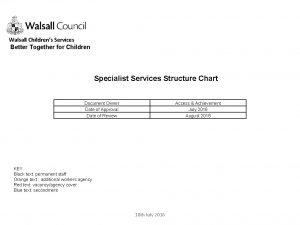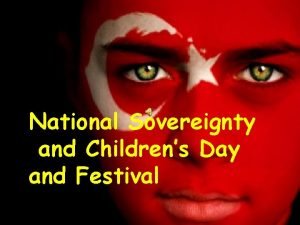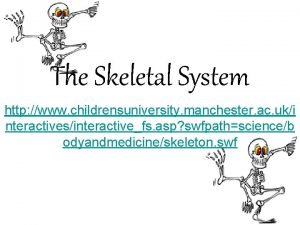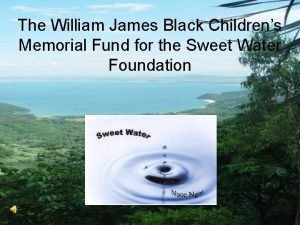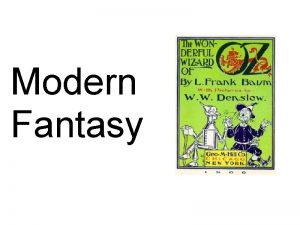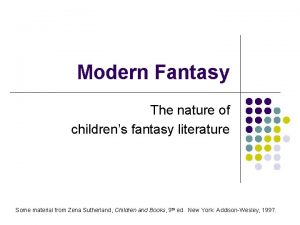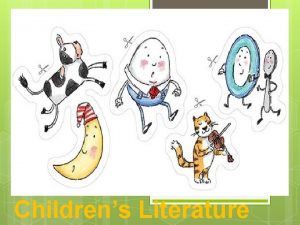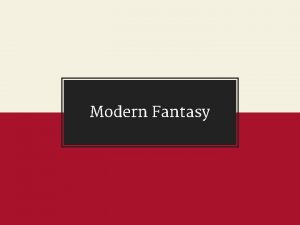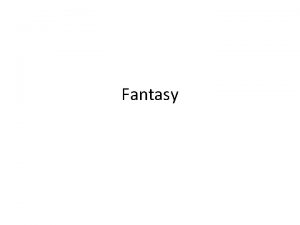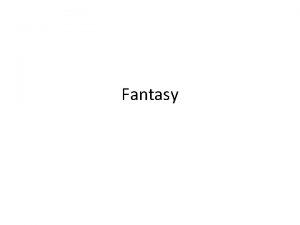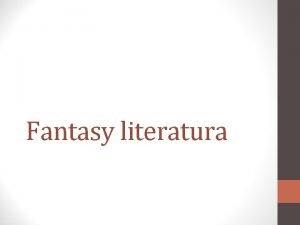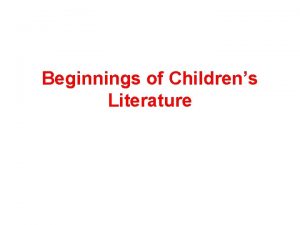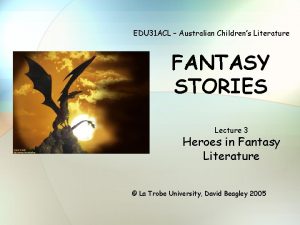Modern Fantasy The nature of childrens fantasy literature














- Slides: 14

Modern Fantasy The nature of children’s fantasy literature

“Make believe” • A commonplace and, probably, essential part of childhood is playing “make believe. ” • For that matter, we continue to make believe, to daydream or fantasize, for the rest of our lives.

Make believe and novels • Any novel or play is, by its very nature, an act of make believe: characters perform actions created by the imagination of the writer • The appeal of fiction and drama is inseparable from this matter of making believe And so…. it is hardly surprising that fantasy is particularly popular with children readers.

What is fantasy? • a work of literature that imaginatively breaks free from the limits and limitations of realism in explicit ways.

Definition • Sutherland says, “The special quality of fantasy is that it concerns things that cannot really happen or that it is about people or creatures who do not exist, yet within the framework of each story there is a self-contained logic, a wholeness of conception that has its own reality. If it does not, it fails” (227).

“a self-contained logic” • The magic elements within a fantasy must be consistent and reasonable: • can’t have a prodigious mind-reader who gets baffled by another character’s thoughts at a crucial moment—unless there’s a good explanation • can’t have characters desperately fighting to avoid dying if we then see that death is positive and welcoming

Three characteristics • Sutherland adds that a good fantasy will contain these three characteristics (among others): sincerity (not too coy or overly whimsical), directness (addressing children as equals, or at least with respect, and not talking down to them), and imagination.

Low Fantasy and High Fantasy • Generally speaking, modern fantasies fall into one of two categories: low and high. • All fantasies depend to some extent on “what Lloyd Alexander calls the ‘primary world’--people’s knowledge and experience of real life. . Low fantasy is actually set in the primary world, but the magical elements of fantasy make the story impossible.

Low Fantasy and High Fantasy • All fantasies depend to some extent on “what Lloyd Alexander calls the ‘primary world’--people’s knowledge and experience of real life. . • Low fantasy is actually set in the primary world, but the magical elements of fantasy make the story impossible. • By contrast, writers of high fantasy take information and experiences from the primary world and project this information to create images and situations of a ‘secondary world

Low Fantasy and High Fantasy • “Authors of high fantasy create a secondary world whose concrete elements are impossible according to the logic of the primary world but consistent with its own laws. • “Some high fantasy stories remain totally in the created world, and some travel between that world and the primary world. Others involve a world within the primary world, marked by boundaries that keep the magic inside the created world. ” • (Children’s Books in Children’s Hands 351)

Kinds of Fantasies • many folktales are traditional fantasies • articulate animal tales--The Wind in the Willows, The Tale of Peter Rabbit, Charlotte’s Web, Poppy (by Avi) • animated toys--Winnie the Pooh, The Indian in the Cupboard, The Castle in the Attic • preposterous characters and situations--Pippi Longstocking, Mary Poppins, Tuck Everlasting, Harry Potter

Kinds of Fantasies • strange and curious worlds--Lewis Carroll; The Phantom Tollbooth, The Ear, the Eye, and the Arm, His Dark Materials, Charlie and the Chocolate Factory (inside the factory is what we can call a fantastic and curious world) • little people--the Borrowers, all manner of fairy / pixie / brownie stories • ghost / spirit stories--The Secret of Green Knowe • time warps—King of Shadows • science fiction--Madeleine l’Engle • high fantasy--more mythic, usually, than most of the above; often involving quests and conflicts of enormous importance; usually involving active use of magic of some sort; Earthsea series, Prydain Chronicles, Sabriel series

3 key fantasy elements • According to Sutherland, writers of fantasy usually manipulate one or more of the following three elements in creating a fantasy: setting, characters, and time. • In each case, the story presents these in something other than familiar, “normal, ” realistic ways. • The Oz books rely on a new and imaginative setting to a certain extent. • They also use characters that are different from what we know in real life (the Highly Magnified Wobblebug, for example). • The Boggart and The Dark Is Rising on the one hand, and Charlotte’s Web on the other, present our world with the addition of special, fantastical characters

Six basic fantasy motifs • Specific elements appear again and again in fantasies. These elements include such things as characters, settings, plot details, and so on. They are commonly referred to as motifs. • In Stith Thompson’s Motif-index of Folk Literature (1932), he identifies hundreds of recurring motifs: “flight from the ball” is one • . More useful for everyday purposes is this list, from Linda Lee Madsen (1976): • magic • other worlds--or secondary worlds • good versus evil (not just good and bad) • heroism and the hero’s quest • special character types • fantastic objects
 Childrens literature quiz
Childrens literature quiz History of childrens literature
History of childrens literature Elements in traditional fantasy
Elements in traditional fantasy Types of modern fantasy
Types of modern fantasy Texas children's hospital moli
Texas children's hospital moli Christian children's fund inc
Christian children's fund inc Childrens services
Childrens services Childrens services walsall
Childrens services walsall Levine childrens
Levine childrens 23 april international children's day turkey
23 april international children's day turkey Kirklees safeguarding childrens board
Kirklees safeguarding childrens board Childrens university of manchester
Childrens university of manchester Longman picture dictionary
Longman picture dictionary Black childrens memorial
Black childrens memorial Toddler fever 102
Toddler fever 102
